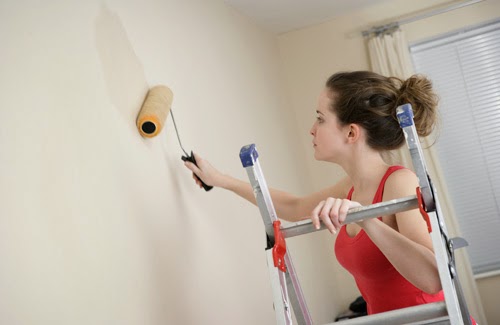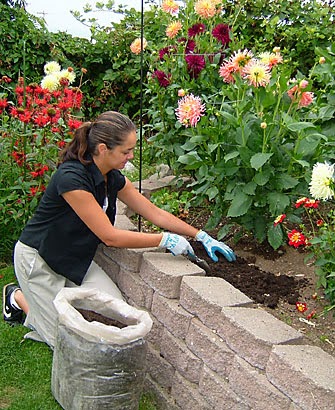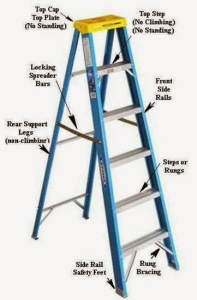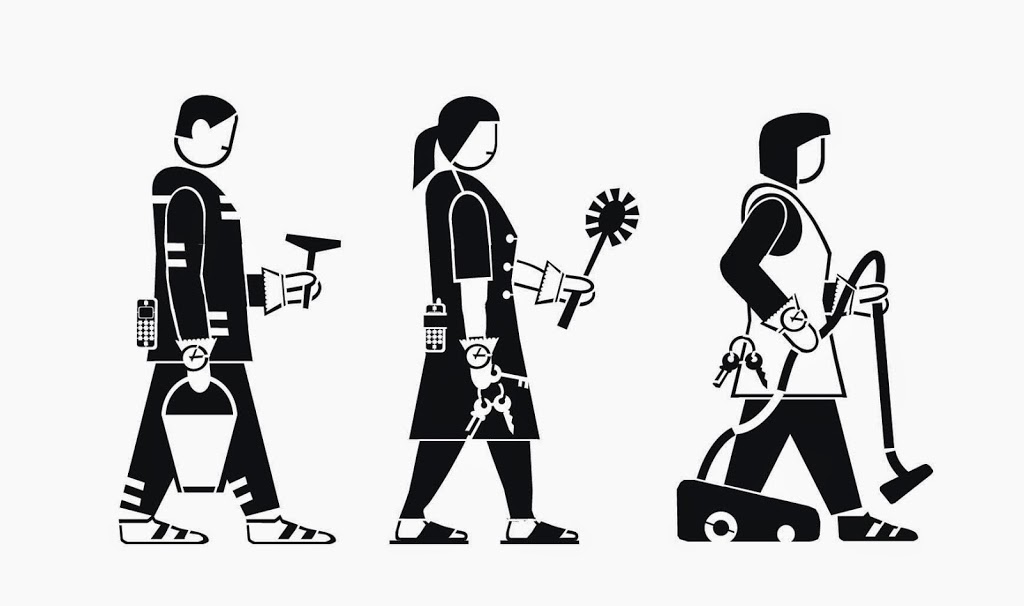Spring Cleaning: Domestic Work
- Painting:Like with other types of physical work, remember to warm up before starting the activity.
- Make sure mops, brooms and vacuum cleaners have sufficiently long handles so you are not hunched over while doing your spring cleaning.
- Stand straight and use your legs to support your weight while cleaning.
- When moving to the side, step in that direction rather than twisting your body to help prevent back injury.
- If hanging laundry on a clothes line, place the basket on a chair so that you don’t need to bend constantly to pick up the clothing.
- Grocery shopping? Don’t carry all your bags on one side. Evenly distribute the weight and carry bags in both hands.
The house needs a few touch-ups? Don’t forget proper posture when working with your paint brush!
 |
| homedit.com |
- To help prevent muscle strain, don’t spend hours reaching over your head with your brush. Instead, get a secure ladder and position yourself at eye-level to the area where you are working.
- When working on low areas, squat or kneel instead of bending at the waist. Use a foam pad under your knees and stand up to take a stretch break periodically.
- Painting is a repetitive motion and can put a great deal of strain on your arms,
- forearms and wrists. Take frequent stretch breaks and apply ice if any pain occurs.
- Like with any major household project, don’t try to do it all in a single day.
Your body will thank you for it!
Spring Cleaning: Gardening
It’s spring, and the lure of getting back in the garden is irresistible. Invigorated by all that balmy fresh air, you spend the first sunny day digging, planting, lifting, and hauling. The next morning, you pay the price.
 |
| dirtmamas.ca |
- Before doing anything–even any pre-garden stretches–take a walk around your yard a few times to loosen up. Or take a brief bike ride around the block to help you limber up.
- Be cautious about the amount of strain placed on your lower back. Let your arms and legs do the work when pulling a rake or pushing a hoe or shovel. When weeding or planting, sit on the ground or kneel on a foam pad.
- Do easier tasks first. As you progress, periodically switch to other jobs to avoid overusing one muscle group.
- Instead of bending at the waist to pick up a bag of mulch, bend at the knees, pull it up on your thigh close to your body and then stand up. Your thighs can take more strain than your back. When turning do not rotate through the torso, rather turn your whole body with the load.
- Assume a scissors stance while raking by placing your right foot forward and left foot back, says the American Chiropractic Association. After a few minutes, reverse this position, puffing your left foot forward and your right foot back. Periodically reverse the position of your hands on the rake.
- Pace yourself. Work for 15 to 30 minutes and take a stretching break. Take stretching breaks and do some shoulder rolls to take a break from the repetitive motions.
- Keep hydrated. Water should be consumed every 30 minutes, and for warm days, every 15 minutes.
- Think of gardening as a workout, and schedule 30 minutes to an hour of it at least three times a week. Break longer gardening sessions into two to three hour time periods instead of all-day undertakings.
Ladder Safety for your Spring Cleaning:
 |
| nachi.org |
The Government of Ontario offers these ladder safety tips:
- Use a ladder of proper length to reach the working height you need.
- Before you use a single, extension or stepladder outside, make sure it will not hit electrical wires or tree limbs when extended.
- Place the feet of the ladder on firm, even ground.
- The bottom of the ladder should be about one foot away from the wall for every four feet that the ladder rises.
- The upper and lower sections of an extension ladder should overlap to provide stability.
- Face the ladder while climbing and stay in the center of the rails. Do not lean over the side of the ladder. Your belt buckle should not be further than the side rail.
- On single or extension ladders, never stand above the third rung from the top and never climb above the point where the ladder touches the wall or vertical support.


